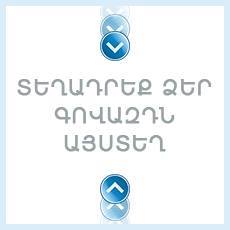Դիպլոմային The Role of Abbreviations in Internet Language
Բովանդակություն
Introduction
Chapter 1. Internet Language
1.1. Methods of Internet Communication
Development of Computer Mediated Communication
1.2. Internet Slag and Language of Chat
Chapter 2. Abbreviations in Internet Language
2.1. Types of Abbreviations
2.2. Abbreviations used in internet language and their Role
Conclusion
Հատված
Recent decades have witnessed the development of new forms of communication. Until the middle of the 19th century, oral communication was the only means of direct interaction. The advent of telegraph, radio, telephone, fax and television signalled the progress towards such modes of communication where live/ relay, oral/ written and one-way/ two-way interaction qualities were patterned in various combinations. Every novel technological mode imposed its restrictions on the convenience and costs of interaction, but no method could provide cheap written two-way communication before the advancement of the Internet, which was developed only as a means of specific military and academic correspondence. However, the specific needs of the society alienating from direct oral communication promoted its application at mass interaction level. In his book A brief history of the future: the origins of the Internet, John Naughton comments: “The Internet is one of the most remarkable things human beings have ever made. In terms of its impact on society, it ranks with print, the railways, the telegraph, the automobile, electric power and television. Some would equate it with print and television, the two earlier technologies which most transformed the communications environment in which people live. Yet it is potentially more powerful than both because it harnesses the intellectual leverage which print gave to mankind without being hobbled by the one-to-many nature of broadcast television” (Naughton, 1999: 21–2).
As a result of creation of Internet, a substantial amount of conversations shifted to the written online mode, where the specific system of restrictions and alternative possibilities resulted in the development of a new mode of language.
According to American Association of University Women, despite the dramatic entry of the Internet into our schools in the past several years, technologies seem to have caused a new gender gap. Therefore, “we need to assess the role of technology in schools to ensure that it promotes equity and collaboration among all students” (American-Association-of-University-Women, 1999). Particularly, the increasing use of computer-mediated communication (CMC) in society has attracted more and more researchers’ attention.
Գրականության ցանկ
1. Adkins, L., Handbook to Life in Ancient Rome, Infobase Publishing, 2004, p. 261
2. Baron, Naomi (2003) “Why Email Looks Like Speech: Proofreading Pedagogy and Public Face.” In New Media Language, ed. Jean Aitchison and Diana M. Lewis, 85–94. London: Routledge
3. Bauer, Laurie. 1993. English word-formation. Cambridge: Cambridge University Press.
4. Biber, Douglas, et al. 1999. Longman grammar of spoken and written English. London: Longman.
5. British Cyclopaedia of the Arts, Sciences, History, Geography, Literature, Natural History, and Biography, Wm. S. Orr and Company, 1838, p.5.
6. Brown, Gillian, and George Yule. 1993. Discourse analysis. Cambridge: Cambridge University Press.
7. Crystal, David. 1998. Language play. Harmondsworth: Penguin.
8. Crystal, David, 2001. Language and the Internet. Cambridge: Cambridge University Press.
9. Davis, B.H. & Brewer, J. P. (1997) Electronic discourse: linguistic individuals in virtual space. Albany, NY: State University of New York Press.
10. Dunn., R., 2013. Identity Theories and Technology. p.30. East Tennessee State University, USA.
11. Garcia, Angela Cora, Standlee, Alecea I., Beckhoff, Jennifer and Yan Cui. Ethnographic Approaches to the Internet and Computer-Mediated Communication. Journal of Contemporary Ethnography. Vol. 38 No. 1 pp 52–84

